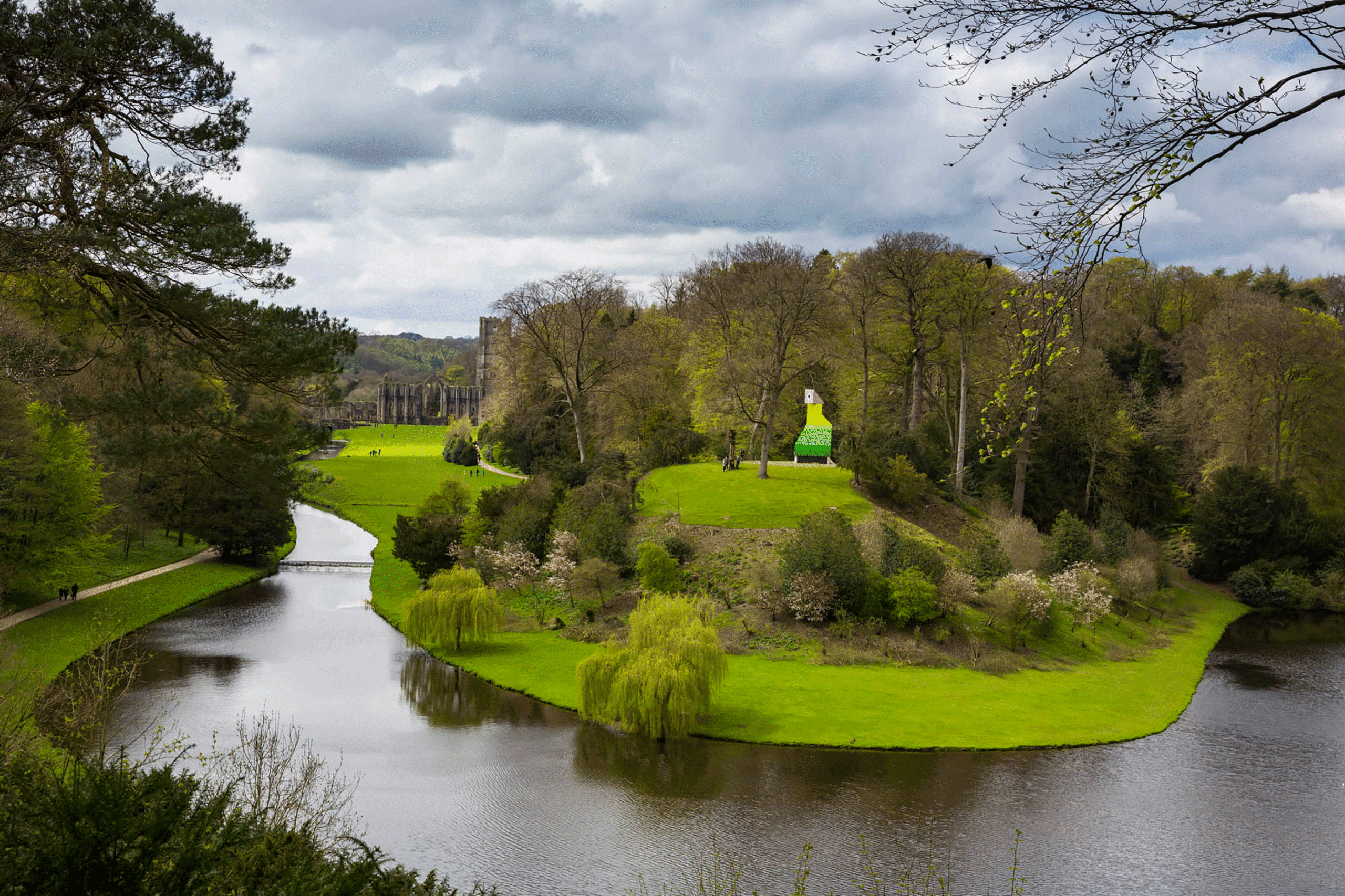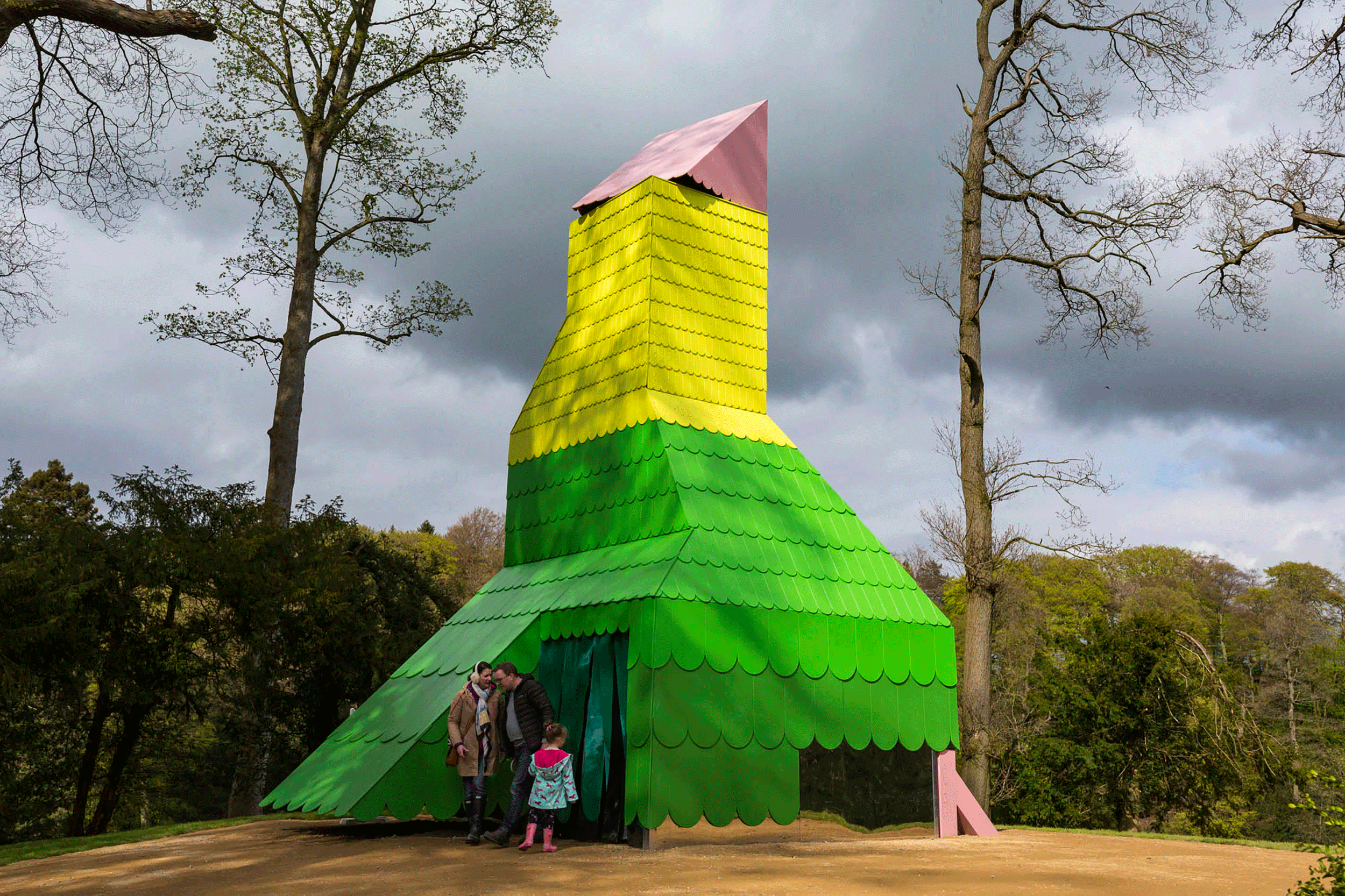Polly
A Summer Pavillion at Fountains Abbey
Polly was commissioned by the National Trust as part of their Folly! 2018 programme. It took the form of a playful temporary pavilion in the grounds of Fountains Abbey and Studley Royal in North Yorkshire.
Inspired by 18th century picturesque landscapes with their follies, grottoes and exotic flora and fauna, the pavilion took the form of a 9m tall timber tower clad in brightly coloured plywood shingles to resemble the plumage of a parrot. The top of the tower contained a powerful lens which projected a view of the surrounding gardens onto a circular table. A hand-operated mechanism allowed visitors to rotate the lens in order to provide a 360 degree view.
Polly was conceived in response to a brief that sought to build on the success of previous National Trust installations and to resonate with the property’s ‘Spirit of Place’. The project was developed to create a unique, engaging, and stimulating experience that would appeal to visitors of all ages. The rotating head interacts with the views and viewpoints that underpin the garden’s design, echoing John Aislabie’s original layout of Studley Royal, where a route culminated in the famous “Surprise View” of Fountains Abbey. Polly playfully encourages a fresh way for visitors to engage with the historic gardens, viewing them from different angles and perspectives, echoing the brief’s aim to offer visitors something unexpected prompting novel understandings and experiences.
Polly’s bold and playful form stands in delightful contrast to the formal setting and surrounding greenery, drawing from other contextual references. The angular forms evoke the colourful patterns of tents and temporary structures once used for hosting parties at this site. Inspiration was also drawn from Jakab Bogdany’s early 18th-century painting Parrots and a Lizard in a Picturesque Garden, as well as the parrots in foliage frieze found in William Burges’ St Mary’s Church within the grounds. Finally Polly’s name is both a play on words and an allusion to Polyphemus, the one-eyed Greek god.
Polly embodies our belief in the power of architecture to bring joy, spark curiosity, and create meaningful connections between people and place, while simultaneously enriching the narrative of this cherished National Trust property.







